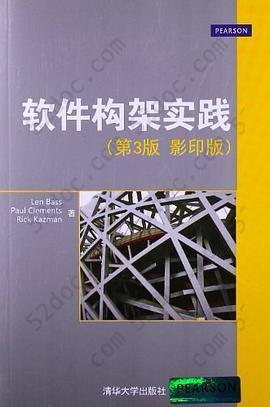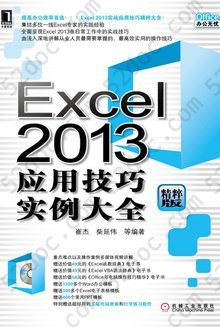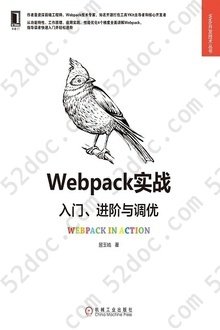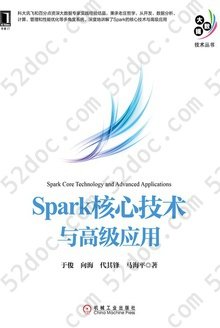注重体验与质量的电子书资源下载网站
分类于: 计算机基础 设计
简介

软件构架实践: (第3版 影印版) 豆 0.0分
资源最后更新于 2020-08-19 16:06:44
作者:林·马斯
出版社:清华大学出版社
出版日期:2013-01
ISBN:9787302312932
文件格式: pdf
标签: 架构 软件架构 计算机 软件设计 软件开发 软件架构师 编程 程序员
简介· · · · · ·
《软件构架实践(第3版•影印版)》是一本荣获大奖且影响深远的经典,目前已经全面修订,充分体现了这一领域的最新进展。基于软件开发的真实现状,《软件构架实践(第3版•影印版)》再次以全新的角度引入软件构架的相关概念和最佳实践,阐述软件系统是如何架构的,软件系统中的各个要素之间又是如何相互作用的。有别于实现细节、算法和数据表示,软件构架是达成高品质软件的关键,是一种可重用于后续软件系统的资产,对软件企业的商业策略至关重要。作者围绕着软件构架影响周期的概念对《软件构架实践(第3版•影印版)》前一版进行了重构。每个周期都表明了软件构架是如何产生影响的,同时它又受哪些因素的影响。软件构架在特定的背景下发挥着关键性的作用。这些背景包括技术环境、项目的生命周期、组织的业务概况和架构师的专业实践。作者还进一步延展了质量属性,仍然以构架理念为中心(用单独—章内容来专门介...
目录
preface xv
reader’s guide xvii
acknowledgments xix
part one: introduction
chapter 1: what is software architecture?
1.1 what software architecture is and what it isn’t
1.2 architectural structures and views
1.3 architectural patterns
1.4 what makes a “good” architecture?
1.5 summary
1.6 for further reading
1.7 discussion questions
chapter 2: why is software architecture important?
2.1 inhibiting or enabling a system’s quality attributes
2.2 reasoning about and managing change
2.3 predicting system qualities
2.4 enhancing communication among stakeholders
2.5 carrying early design decisions
2.6 defining constraints on an implementation
.2.7 influencing the organizational structure
2.8 enabling evolutionary prototyping
2.9 improving cost and schedule estimates
2.10 supplying a transferable, reusable model
2.11 allowing incorporation of independently developedcomponents
2.12 restricting the vocabulary of design alternatives
2.13 providing a basis for training
2.14 summary
2.15 for further reading
2.16 discussion questions
chapter 3: the many contexts of software architecture
3.1 architecture in a technical context
3.2 architecture in a project life-cycle context
3.3 architecture in a business context
3.4 architecture in a professional context
3.5 stakeholders
3.6 how is architecture influenced?
3.7 what do architectures influence?
3.8 summary
3.9 for further reading
3.10 discussion questions
part two: quality attributes
chapter 4: understanding quality attributes
4.1 architecture and requirements
4.2 functionality
4.3 quality attribute considerations
4.4 specifying quality attribute requirements
4.5 achieving quality attributes through tactics
4.6 guiding quality design decisions
4.7 summary
4.8 for further reading
4.9 discussion questions
chapter 5: availability
5.1 availability general scenario
5.2 tactics for availability
5.3 a design checklist for availability
5.4 summary
5.5 for further reading
5.6 discussion questions
chapter 6: interoperability
6.1 interoperability general scenario
6.2 tactics for interoperability
6.3 a design checklist for interoperability
6.4 summary
6.5 for further reading
6.6 discussion questions
chapter 7: modifiability
7.1 modifiability general scenario
7.2 tactics for modifiability
7.3 a design checklist for modifiability
7.4 summary
7.5 for further reading
7.6 discussion questions
chapter 8: performance
8.1 performance general scenario
8.2 tactics for performance
8.3 a design checklist for performance
8.4 summary
8.5 for further reading
8.6 discussion questions
chapter 9: security
9.1 security general scenario
9.2 tactics for security
9.3 a design checklist for security
9.4 summary
9.5 for further reading
9.6 discussion questions
chapter 10: testability
10.1 testability general scenario
10.2 tactics for testability
10.3 a design checklist for testability
10.4 summary
10.5 for further reading
10.6 discussion questions
chapter 11: usability
11.1 usability general scenario
11.2 tactics for usability
11.3 a design checklist for usability
11.4 summary
11.5 for further reading
11.6 discussion questions
chapter 12: other quality attributes
12.1 other important quality attributes
12.2 other categories of quality attributes
12.3 software quality attributes and system qualityattributes
12.4 using standard lists of quality attributes–or not
12.5 dealing with “x-ability”: bringing a new quality attributeinto the fold
12.6 for further reading
12.7 discussion questions
chapter 13: architectural tactics and patterns
13.1 architectural patterns
13.2 overview of the patterns catalog
13.3 relationships between tactics and patterns
13.4 using tactics together
13.5 summary
13.6 for further reading
13.7 discussion questions
chapter 14: quality attribute modeling and analysis
14.1 modeling architectures to enable quality attributeanalysis
14.2 quality attribute checklists
14.3 thought experiments and back-of-the-envelope analysis
14.4 experiments, simulations, and prototypes
14.5 analysis at different stages of the life cycle
14.6 summary
14.7 for further reading
14.8 discussion questions
part three: architecture in the life cycle
chapter 15: architecture in agile projects
15.1 how much architecture?
15.2 agility and architecture methods
15.3 a brief example of agile architecting
15.4 guidelines for the agile architect
15.5 summary
15.6 for further reading
15.7 discussion questions
chapter 16: architecture and requirements
16.1 gathering asrs from requirements documents
16.2 gathering asrs by interviewing stakeholders
16.3 gathering asrs by understanding the business goals
16.4 capturing asrs in a utility tree
16.5 tying the methods together
16.6 summary
16.7 for further reading
16.8 discussion questions
chapter 17: designing an architecture
17.1 design strategy
17.2 the attribute-driven design method
17.3 the steps of add
17.4 summary
17.5 for further reading
17.6 discussion questions
chapter 18: documenting software architectures
18.1 uses and audiences for architecture documentation
18.2 notations for architecture documentation
18.3 views
18.4 choosing the views
18.5 combining views
18.6 building the documentation package
18.7 documenting behavior
18.8 architecture documentation and quality attributes
18.9 documenting architectures that change faster than you candocument them
18.10 documenting architecture in an agile developmentproject
18.11 summary
18.12 for further reading
18.13 discussion questions
chapter 19: architecture, implementation, and testing
19.1 architecture and implementation
19.2 architecture and testing
19.3 summary
19.4 for further reading
19.5 discussion questions
chapter 20: architecture reconstruction and conformance
20.1 architecture reconstruction process
20.2 raw view extraction
20.3 database construction
20.4 view fusion
20.5 architecture analysis: finding violations
20.6 guidelines
20.7 summary
20.8 for further reading
20.9 discussion questions
chapter 21: architecture evaluation
21.1 evaluation factors
21.2 the architecture tradeoff analysis method
21.3 lightweight architecture evaluation
21.4 summary
21.5 for further reading
21.6 discussion questions
chapter 22: management and governance
22.1 planning
22.2 organizing
22.3 implementing
22.4 measuring
22.5 governance
22.6 summary
22.7 for further reading
22.8 discussion questions
part four: architecture and business
chapter 23: economic analysis of architectures
23.1 decision-making context
23.2 the basis for the economic analyses
23.3 putting theory into practice: the cbam
23.4 case study: the nasa ecs project
23.5 summary
23.6 for further reading
23.7 discussion questions
chapter 24: architecture competence
24.1 competence of individuals: duties, skills, and knowledge ofarchitects
24.2 competence of a software architecture organization
24.3 summary
24.4 for further reading
24.5 discussion questions
chapter 25: architecture and software product lines
25.1 an example of product line variability
25.2 what makes a software product line work?
25.3 product line scope
25.4 the quality attribute of variability
25.5 the role of a product line architecture
25.6 variation mechanisms
25.7 evaluating a product line architecture
25.8 key software product line issues
25.9 summary
25.10 for further reading
25.11 discussion questions
part five: the brave new world
chapter 26: architecture in the cloud
26.1 basic cloud definitions
26.2 service models and deployment options
26.3 economic justification
26.4 base mechanisms
26.5 sample technologies
26.6 architecting in a cloud environment
26.7 summary
26.8 for further reading
26.9 discussion questions
chapter 27: architectures for the edge
27.1 the ecosystem of edge-dominant systems
27.2 changes to the software development life cycle
27.3 implications for architecture
27.4 implications of the metropolis model
27.5 summary
27.6 for further reading
27.7 discussion questions
chapter 28: epilogue
references
about the authors
index
reader’s guide xvii
acknowledgments xix
part one: introduction
chapter 1: what is software architecture?
1.1 what software architecture is and what it isn’t
1.2 architectural structures and views
1.3 architectural patterns
1.4 what makes a “good” architecture?
1.5 summary
1.6 for further reading
1.7 discussion questions
chapter 2: why is software architecture important?
2.1 inhibiting or enabling a system’s quality attributes
2.2 reasoning about and managing change
2.3 predicting system qualities
2.4 enhancing communication among stakeholders
2.5 carrying early design decisions
2.6 defining constraints on an implementation
.2.7 influencing the organizational structure
2.8 enabling evolutionary prototyping
2.9 improving cost and schedule estimates
2.10 supplying a transferable, reusable model
2.11 allowing incorporation of independently developedcomponents
2.12 restricting the vocabulary of design alternatives
2.13 providing a basis for training
2.14 summary
2.15 for further reading
2.16 discussion questions
chapter 3: the many contexts of software architecture
3.1 architecture in a technical context
3.2 architecture in a project life-cycle context
3.3 architecture in a business context
3.4 architecture in a professional context
3.5 stakeholders
3.6 how is architecture influenced?
3.7 what do architectures influence?
3.8 summary
3.9 for further reading
3.10 discussion questions
part two: quality attributes
chapter 4: understanding quality attributes
4.1 architecture and requirements
4.2 functionality
4.3 quality attribute considerations
4.4 specifying quality attribute requirements
4.5 achieving quality attributes through tactics
4.6 guiding quality design decisions
4.7 summary
4.8 for further reading
4.9 discussion questions
chapter 5: availability
5.1 availability general scenario
5.2 tactics for availability
5.3 a design checklist for availability
5.4 summary
5.5 for further reading
5.6 discussion questions
chapter 6: interoperability
6.1 interoperability general scenario
6.2 tactics for interoperability
6.3 a design checklist for interoperability
6.4 summary
6.5 for further reading
6.6 discussion questions
chapter 7: modifiability
7.1 modifiability general scenario
7.2 tactics for modifiability
7.3 a design checklist for modifiability
7.4 summary
7.5 for further reading
7.6 discussion questions
chapter 8: performance
8.1 performance general scenario
8.2 tactics for performance
8.3 a design checklist for performance
8.4 summary
8.5 for further reading
8.6 discussion questions
chapter 9: security
9.1 security general scenario
9.2 tactics for security
9.3 a design checklist for security
9.4 summary
9.5 for further reading
9.6 discussion questions
chapter 10: testability
10.1 testability general scenario
10.2 tactics for testability
10.3 a design checklist for testability
10.4 summary
10.5 for further reading
10.6 discussion questions
chapter 11: usability
11.1 usability general scenario
11.2 tactics for usability
11.3 a design checklist for usability
11.4 summary
11.5 for further reading
11.6 discussion questions
chapter 12: other quality attributes
12.1 other important quality attributes
12.2 other categories of quality attributes
12.3 software quality attributes and system qualityattributes
12.4 using standard lists of quality attributes–or not
12.5 dealing with “x-ability”: bringing a new quality attributeinto the fold
12.6 for further reading
12.7 discussion questions
chapter 13: architectural tactics and patterns
13.1 architectural patterns
13.2 overview of the patterns catalog
13.3 relationships between tactics and patterns
13.4 using tactics together
13.5 summary
13.6 for further reading
13.7 discussion questions
chapter 14: quality attribute modeling and analysis
14.1 modeling architectures to enable quality attributeanalysis
14.2 quality attribute checklists
14.3 thought experiments and back-of-the-envelope analysis
14.4 experiments, simulations, and prototypes
14.5 analysis at different stages of the life cycle
14.6 summary
14.7 for further reading
14.8 discussion questions
part three: architecture in the life cycle
chapter 15: architecture in agile projects
15.1 how much architecture?
15.2 agility and architecture methods
15.3 a brief example of agile architecting
15.4 guidelines for the agile architect
15.5 summary
15.6 for further reading
15.7 discussion questions
chapter 16: architecture and requirements
16.1 gathering asrs from requirements documents
16.2 gathering asrs by interviewing stakeholders
16.3 gathering asrs by understanding the business goals
16.4 capturing asrs in a utility tree
16.5 tying the methods together
16.6 summary
16.7 for further reading
16.8 discussion questions
chapter 17: designing an architecture
17.1 design strategy
17.2 the attribute-driven design method
17.3 the steps of add
17.4 summary
17.5 for further reading
17.6 discussion questions
chapter 18: documenting software architectures
18.1 uses and audiences for architecture documentation
18.2 notations for architecture documentation
18.3 views
18.4 choosing the views
18.5 combining views
18.6 building the documentation package
18.7 documenting behavior
18.8 architecture documentation and quality attributes
18.9 documenting architectures that change faster than you candocument them
18.10 documenting architecture in an agile developmentproject
18.11 summary
18.12 for further reading
18.13 discussion questions
chapter 19: architecture, implementation, and testing
19.1 architecture and implementation
19.2 architecture and testing
19.3 summary
19.4 for further reading
19.5 discussion questions
chapter 20: architecture reconstruction and conformance
20.1 architecture reconstruction process
20.2 raw view extraction
20.3 database construction
20.4 view fusion
20.5 architecture analysis: finding violations
20.6 guidelines
20.7 summary
20.8 for further reading
20.9 discussion questions
chapter 21: architecture evaluation
21.1 evaluation factors
21.2 the architecture tradeoff analysis method
21.3 lightweight architecture evaluation
21.4 summary
21.5 for further reading
21.6 discussion questions
chapter 22: management and governance
22.1 planning
22.2 organizing
22.3 implementing
22.4 measuring
22.5 governance
22.6 summary
22.7 for further reading
22.8 discussion questions
part four: architecture and business
chapter 23: economic analysis of architectures
23.1 decision-making context
23.2 the basis for the economic analyses
23.3 putting theory into practice: the cbam
23.4 case study: the nasa ecs project
23.5 summary
23.6 for further reading
23.7 discussion questions
chapter 24: architecture competence
24.1 competence of individuals: duties, skills, and knowledge ofarchitects
24.2 competence of a software architecture organization
24.3 summary
24.4 for further reading
24.5 discussion questions
chapter 25: architecture and software product lines
25.1 an example of product line variability
25.2 what makes a software product line work?
25.3 product line scope
25.4 the quality attribute of variability
25.5 the role of a product line architecture
25.6 variation mechanisms
25.7 evaluating a product line architecture
25.8 key software product line issues
25.9 summary
25.10 for further reading
25.11 discussion questions
part five: the brave new world
chapter 26: architecture in the cloud
26.1 basic cloud definitions
26.2 service models and deployment options
26.3 economic justification
26.4 base mechanisms
26.5 sample technologies
26.6 architecting in a cloud environment
26.7 summary
26.8 for further reading
26.9 discussion questions
chapter 27: architectures for the edge
27.1 the ecosystem of edge-dominant systems
27.2 changes to the software development life cycle
27.3 implications for architecture
27.4 implications of the metropolis model
27.5 summary
27.6 for further reading
27.7 discussion questions
chapter 28: epilogue
references
about the authors
index








